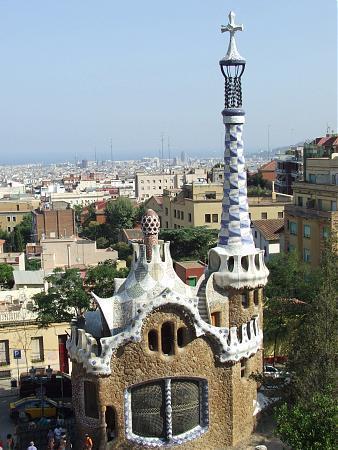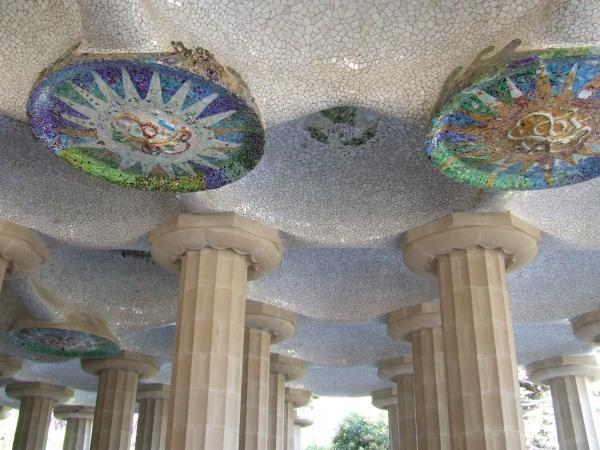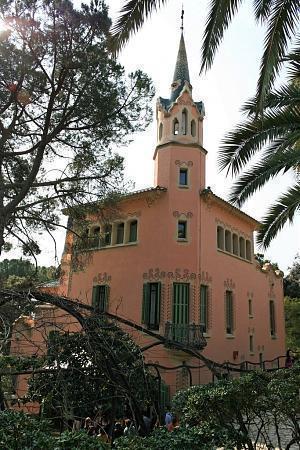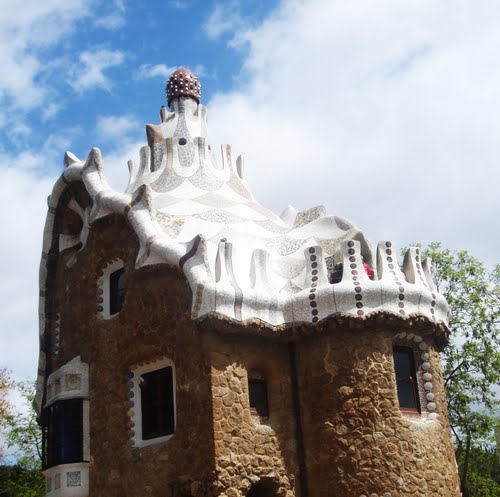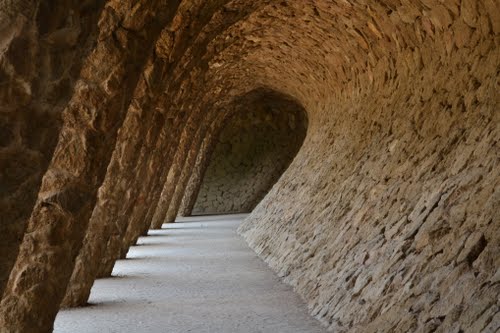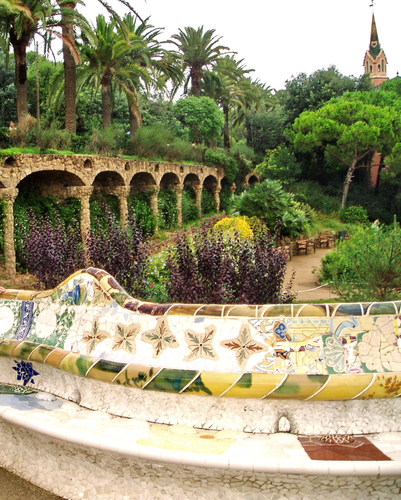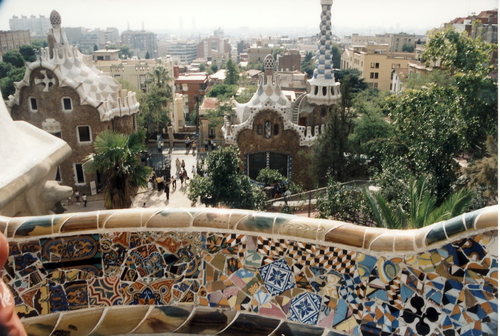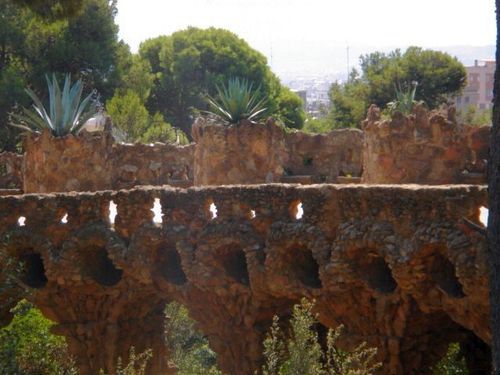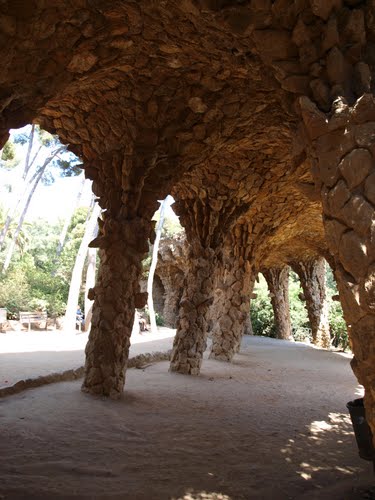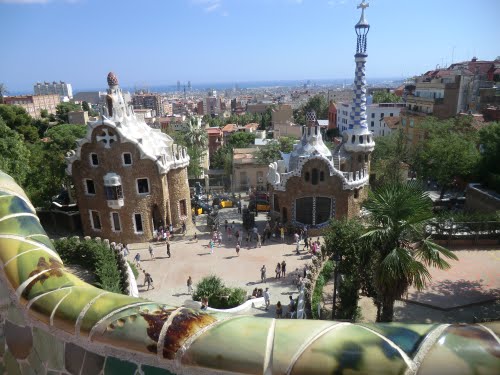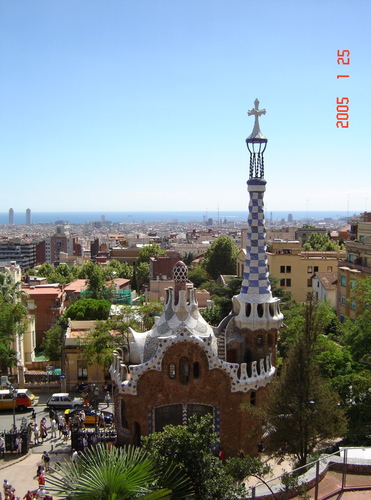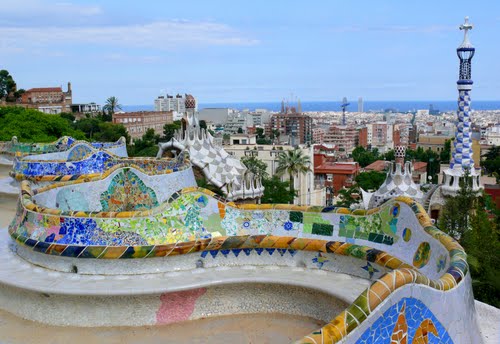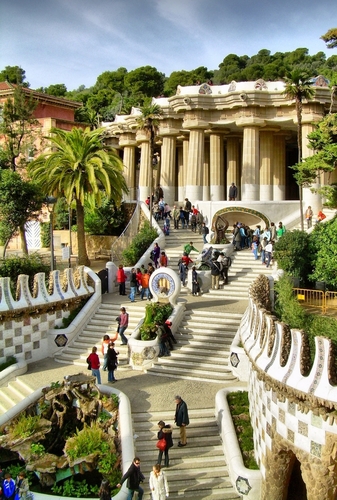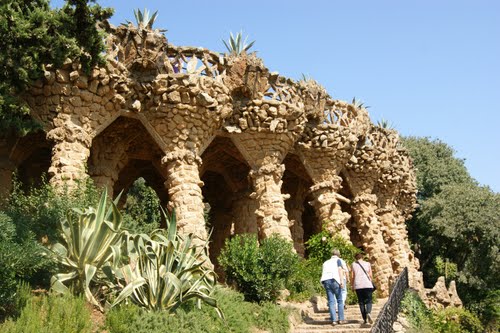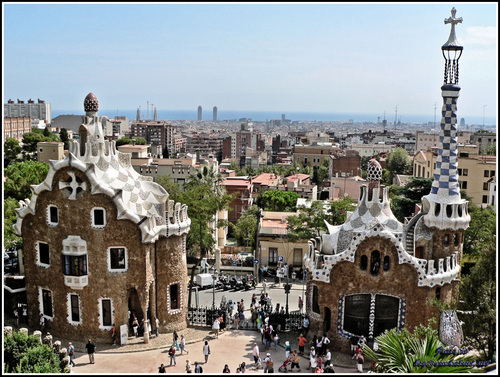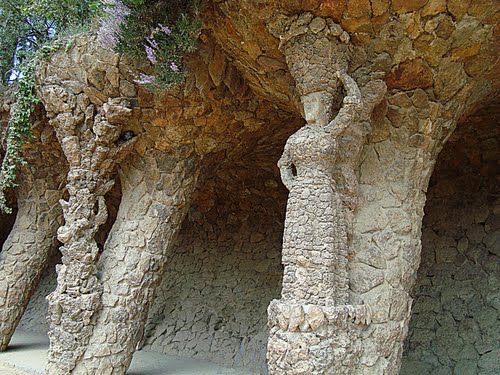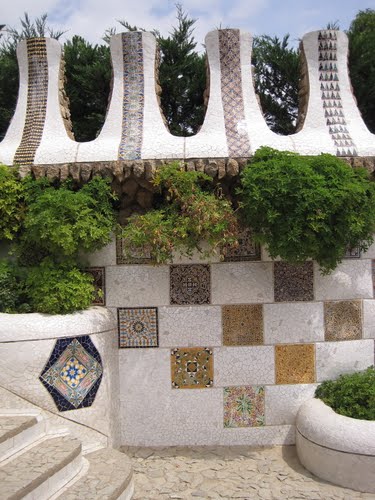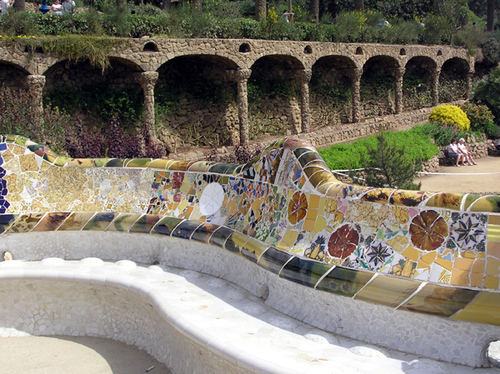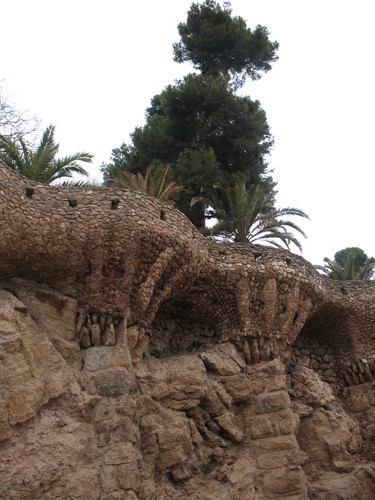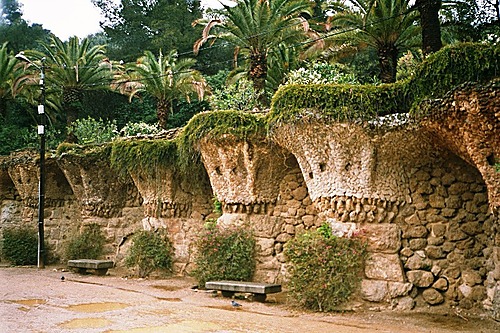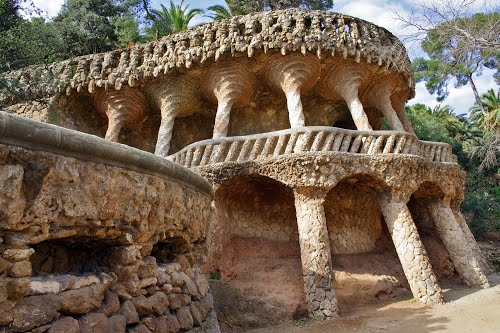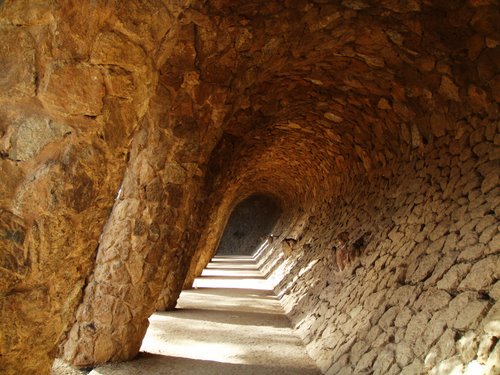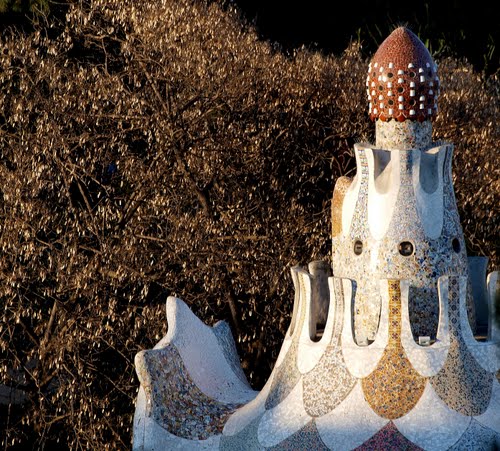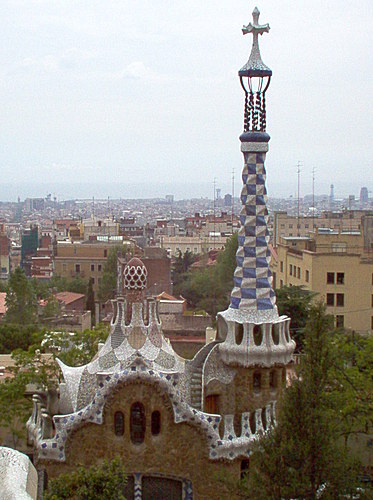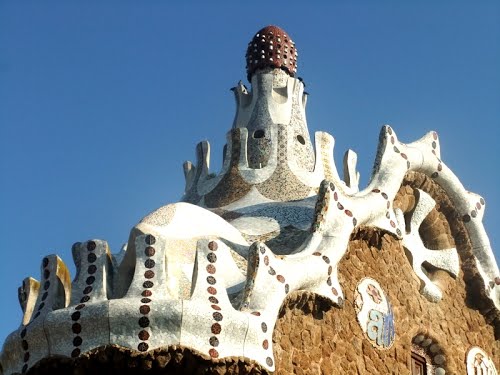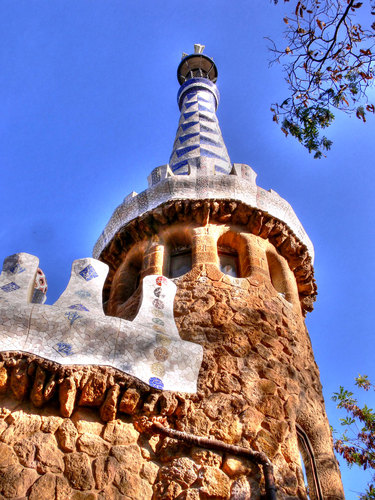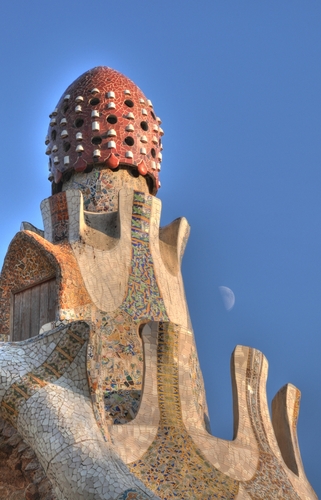The Park Guell is a public park system composed of gardens and architectonic elements located on Carmel Hill, in Barcelona, Catalonia. Carmel Hill belongs to the mountain range of Collserola – the Parc del Carmel is located on the northern face. Park Guell is located in La Salut, a neighborhood in the Gracia district of Barcelona. With urbanization in mind, Eusebi Guell assigned the design of the park to Antoni Gaudi, a renowned architect and the face of Catalan modernism. The park was built between 1900 and 1914 and was officially opened as a public park in 1926. In 1984, UNESCO declared the park a World Heritage Site under “Works of Antoni Gaudí”.
Description
Park Guell is the reflection of Gaudi’s artistic plenitude, which belongs to his naturalist phase (first decade of the 20th century). During this period, the architect perfected his personal style through inspiration from organic shapes. He put into practice a series of new structural solutions rooted in the analysis of geometry. To that, the Catalan artist adds creative liberty and an imaginative, ornamental creation. Starting from a sort of baroquism, his works acquire a structural richness of forms and volumes, free of the rational rigidity or any sort of classic premises. In the design of Park Guell, Gaudi unleashed all his architectonic genius and put to practice much of his innovative structural solutions that would become the symbol of his organic style and that would culminate in the creation of the Basilica and Expiatory Church of the Holy Family.
Guell and Gaudi conceived this park, situated within a natural park. They imagined an organized grouping of high-quality homes, decked out with all the latest technological advancements to ensure maximum comfort, finished off with an artistic touch. They also envisioned a community strongly influenced by symbolism, since, in the common elements of the park, they were trying to synthesize many of the political and religious ideals shared by patron and architect: therefore there are noticeable concepts originating from political Catalanism – especially in the entrance stairway where the Catalonian countries are represented – and from Catholicism – the Monumento al Calvario, originally designed to be a chapel. The mythological elements are so important: apparently Guell and Gaudi's conception of the park was also inspired by the Temple of Apollo of Delphi.
On the other hand, many experts have tried to link the park to various symbols because of the complex iconography that Gaudi applied to the urban project. Such references go from political vindication to religious exaltation, passing through mythology, history and philosophy. Specifically, many studies claim to see references to Freemasonry, despite the deep religious beliefs of both Gaudi and Count Guell. These references have not been proven in the historiography of the modern architect. The multiplicity of symbols found in the Park Guell is, as previously mentioned, associated to political and religious signs, with a touch of mystery according to the preferences of that time for enigmas and puzzles.
Origins as a housing development
The park was originally part of a commercially unsuccessful housing site, the idea of Count Eusebi Guell, after whom the park was named. It was inspired by the English garden city movement, hence the original English name Park. The site was a rocky hill with little vegetation and few trees, called Muntanya Pelada. It already included a large country house called Larrard House or Muntaner de Dalt House, and was next to a neighborhood of upper class houses called La Salut. The intention was to exploit the fresh air and beautiful views from the site, with sixty triangular lots being provided for luxury houses. Count Eusebi Guell added to the prestige of the development by moving in 1906 to live in Larrard House. Ultimately, only two houses were built, neither designed by Gaudi. One was intended to be a show house, but on being completed in 1904 was put up for sale, and as no buyers came forward, Gaudi, at Guell's suggestion, bought it with his savings and moved in with his family and his father in 1906. This house, where Gaudi lived from 1906 to 1926, was built by Francesc Berenguer in 1904. It contains original works by Gaudi and several of his collaborators. It is now the Gaudi House Museum since 1963. In 1969 it was declared a historical artistic monument of national interest.
Municipal garden
Park Guell is designed and composed to bring the peace and calm that one would expect from a park. The buildings flanking the entrance, though very original and remarkable with fantastically shaped roofs with unusual pinnacles, fit in well with the use of the park as pleasure gardens and seem relatively inconspicuous in the landscape when one considers the flamboyance of other buildings designed by Gaudi. One of these buildings houses a permanent exhibition of the Barcelona City History Museum MUHBA focused on the building itself, the park and the city.
The focal point of the park is the main terrace, surrounded by a long bench in the form of a sea serpent. The curves of the serpent bench form a number of enclaves, creating a more social atmosphere. Gaudi incorporated many motifs of Catalan nationalism, and elements from religious mysticism and ancient poetry, into the Park.
Roadways around the park to service the intended houses were designed by Gaudi as structures jutting out from the steep hillside or running on viaducts, with separate footpaths in arcades formed under these structures. This minimized the intrusion of the roads, and Gaudi designed them using local stone in a way that integrates them closely into the landscape. His structures echo natural forms, with columns like tree trunks supporting branching vaulting under the roadway, and the curves of vaulting and alignment of sloping columns designed in a similar way to his Church of Colonia Guell so that the inverted catenary arch shapes form perfect compression structures.
The large cross at the park's high-point offers the most complete view of Barcelona and the bay. It is possible to view the main city in panorama, with the Sagrada Família and the Montjuic area visible at a distance.
The park supports a wide variety of wildlife, notably several of the non-native species of parrot found in the Barcelona area. Other birds can be seen from the park, with records including short-toed eagle. The park also supports a population of hummingbird hawk moths.

